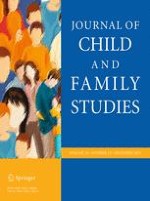09-04-2015 | Original Paper
The Perceived Role of Parental Support and Pressure in the Interplay of Test Anxiety and School Engagement Among Adolescents: Evidence for Gender-Specific Relations
Gepubliceerd in: Journal of Child and Family Studies | Uitgave 12/2015
Log in om toegang te krijgenAbstract
Although there has been an increasing amount of research conducted on test anxiety in adolescence, little is known about the relation of test anxiety and school engagement. The current study addresses this gap by focusing on the potential gender-specific interplay of test anxiety and school engagement among adolescents, testing the role of parental support and parental pressure as mediators in this association. We performed latent multigroup structural equation modeling on a sample of 7th and 8th graders (N = 1088; M
Age = 13.7 years; SD = .53) in secondary schools in Brandenburg, Germany. The results suggest that there are gender differences in the interplay of test anxiety, perceived socio-academic parental support and pressure, and school engagement. Whereas girls’ school engagement is more centered on the mother figure, for boys both parents seem to play an essential role concerning their school engagement as well as test anxiety.
